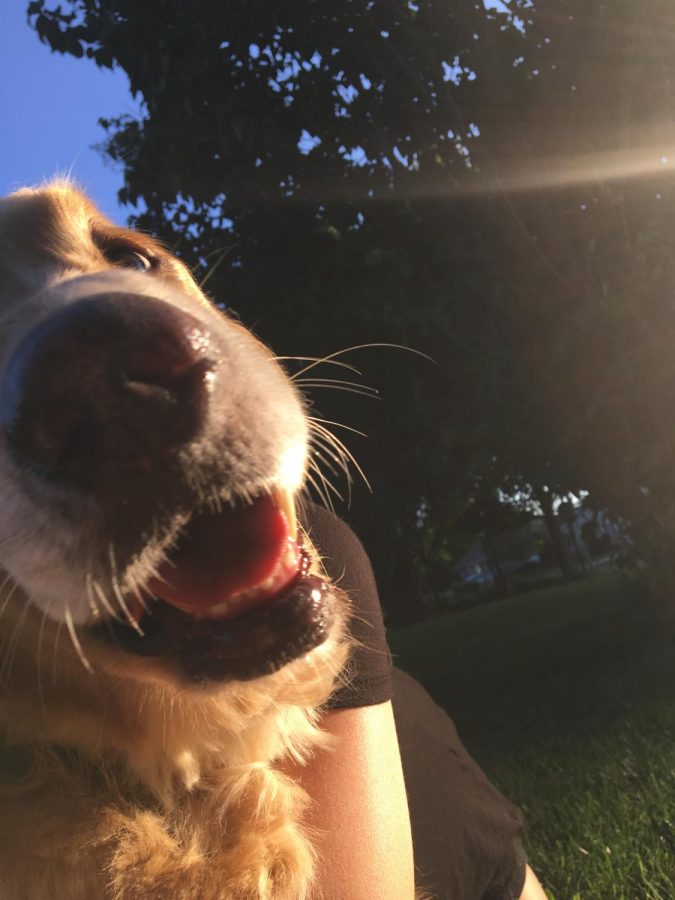Shelters vs Stores
Shelters vs Stores
Pet Stores and Shelters both have their own pros and cons of buying their dogs.
PetLand
By: Hunter Herman and Ellen Moser
Pet stores are located all over Iowa, and have a wide array of cute animals. But are all the animals healthy specifically the dogs? Do they tell us if there is something wrong with them? What happens to the puppies that don’t get adopted? One of the managers at Petland said “(high pitch noise) uhhhh they all go to safe homes”. Some pet stores will give there unadopted dogs to a shelter so the dogs have a longer time to live. Although they have the prettiest and most delicate dogs, what are the pros and cons of having a shelter animal or pet store animal.
Pet stores are more abundant than shelters, because stores mostly have younger or smaller dogs which allows them to have multiple in one cage. Shelters can get older dogs that are less likely to get adopted because people tend to want puppies. Yes, they are both good dogs, people would rather get younger dogs because dogs personality aren’t fully developed yet.
Petland, located in Iowa City, one of the many of PetLand managers says “the kennels are clean and kept up to their vaccinations.” Petland get their dogs from USDA certified breeders, which means the breeders sell to brokers or pet stores. They make hundreds of sales each day, including more than just dogs. Petland holds a variety of animals, from dogs and cats to lizards and fish.
Petland has all sorts of animals from bunnies to snakes. You can pet them too, after you sanitize your hands. The dogs are kept on the right side of the store with glass to protect you and themselves. You can go there and pet them anytime you want! They all romp around or sleep in pods whenever they are not being disturbed by people. When I was walking around, I overheard a coworker say “hey you wanna pet one of these cute guys?” to a person who seemed interested in dogs. She was very friendly and even brought out a puppy for them to play with. She said before and after “please sanitize yours hands before and after”.
Petland is located at 1851 Lower Muscatine Rd, Iowa City, IA 52240
Shelters
Ellen Moser & Emma Hall
Roughly 3.3 companion dogs go to shelters every year, according to the ASPCA. How are they taken care of from then on, and do they have hope for meeting a new family?
“The shelter can hold 19 [dogs] and that’s kinda contingent on health conditions and whether any dogs have issues with other dogs, stuff like that,” said Kathy Condon, a foster lead and veteran volunteer at Last Hope Animal Rescue in Cedar Rapids. “We try to work with some trainers and one of the first things we look at when a dog has a behavioral issue is their health, you know, do they have a bad tooth? You know, when you’re sick and you don’t feel well you can get cranky, that’s the same way with dogs.” Kathy’s wisdom comes from years of experience at Last Hope, and having several dogs herself. “The number one cause why a dog will often times bite is because it’s not feeling well, so the first thing we do is make sure it’s healthy and then we’ll work with a trainer and a lot of times put them with experienced fosters that know how to work with dogs, so we don’t adopt dogs out until we feel like it’s ready to be adopted.”
Lots of shelters struggle with the problem of overcrowding, and Last Hope is not exempt, but they have come up with a unique solution that allows them to be a No-Kill shelter. When they have too many dogs coming in, instead of euthanizing them or keeping them in cramped quarters without enough resources, Last Hope arranges for dogs to be temporarily placed in foster homes. Fosters have to undergo strict background checks and have their property and home thoroughly surveyed before they are approved to foster shelter dogs. As for what fostering is, the dog fostering process is quite similar to that of children; the dogs are cared for by their fosters until they are able to be welcomed into a permanent family or another living arrangement is made. No matter which phase of the rescue they’re in, whether it be residing at the rescue, in a foster home or being recently adopted out, Last Hope is extremely careful to make sure that all of their dogs are spayed or neutered and receive all necessary vaccinations.
As for where shelter dogs initially come from, there’s a wide variety of answers, and sometimes a dog’s previous living circumstances are even unknown.
“We get a lot of dogs that are owner-surrenders, people can no longer keep their dog for one reason or another, be it they’re going to a nursing home, they have to move and can’t take their dog. We get a lot of dogs, people get a puppy like a husky for example and they think “Oh, this is a cute little puppy,” but then when it grows up it’s way too much for them and they can’t handle it, and so then they surrender the dog to us, says Condon.” Surprisingly, many dogs even come in from out-of-state.
“We get a lot of dogs from other states; the South is notorious for having a lot of strays and so we get a lot of them from Texas, particularly. We’ve gotten dogs from Arkansas, we work with the shelter down there.” Condon The south is just overrun with stray dogs, so Hurricane Harvey that went through Houston this summer was a particularly bad situation because Houston is considered the “stray dog capital” of the country, so you can imagine the thousands of dogs that were sent to shelters around the country. There’s a shelter in Austin Texas called Texalive, Austin Texalive, that took a couple thousand, perhaps even more, you know as the time went on, but they took you know, thousands, Austin did, and so did San Antonio,” says Condon.
An employee at the The Iowa City Animal Shelter was also interviewed. She described that In their shelter they can hold up to 13 dogs at a time, along with many other animals such as cats, rodents, and sometimes birds.
The state inspects the property every year and the dogs get vaccinated and spayed or neutered immediately upon arrival, followed by a booster shot a few weeks later. Employees go through on-the-job training and then go through shelter management classes to prepare for the job. The shelter is full of blankets, toys and treats for not just the dogs, but all the animals. When the shelter gets too full, some of the dogs go into foster care. But not just anyone can foster, there’s a process you have to go through if you want to foster.”They go through an application process and we inspect their property and do a background check. If everything is good then they are qualified to foster.” Staff and volunteers work closely with the animals to get them used to being around people, especially dogs that have been abused or have had little contact with humans. The employee described this process as taking days to weeks and they are careful to make sure a dog is safe to be around humans before it is adopted. Unfortunately, she said that some dogs are too dangerous to be around people even after extensive training. She says one of the hardest parts of the job involves having to euthanize dogs that are either not safe or have a terminal illness. She said that dogs and other animals are never euthanized because of space issues. The shelter relies on volunteers to help with most jobs such as doing laundry, washing items, walking and training dogs and answering potential adopter’s questions.
Funding for the shelter comes from the city and donations through their foundation. They hold events for community members to interact with the dogs, encourage volunteering and donations. She reported that the shelter was built recently to meet the needs of the animals and to make their temporary homes as nice as possible.
The Iowa city animal shelter is located at 3910 Napoleon Lane Iowa City IA 52240










